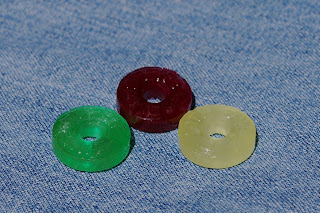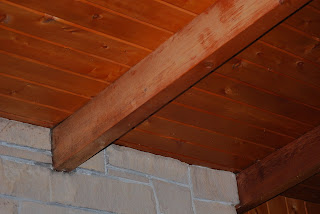For us, vacation has almost always involved long drives to visit family. With the exception of our early marriage years, we have never lived close to relatives - often being hundreds of miles apart. A one or two-day drive seems a small price to pay for a treasured, once-a-year visit. Spending hours in a car, watching farms, fields, forests and small towns roll by can be stimulating, mesmerizing, hypnotizing - boring at times - lulling one into a private fog of thoughts, ideas, memories.
As a child, when my parents and I took a trip the back seat of the car was my private domain, though often cramped and small, depending on how much necessary “stuff” was packed in there with me. That was in the days before air conditioning and mandatory seat belts. I spread out as much as I could, daydreaming myself across the country. Mom would often stow away a small treat, silently passing it back to me with a smile somewhere near the halfway point of the trip. And so, with bare feet out the window, hot, dry, air whipping my hair, I slowly savored one sweet Lifesaver at a time, while imagination carried me anywhere I wished.
I have to admit, as an adult I still pack along a roll (or sometimes two) of Lifesavers for a long trip. For me, the magic is still there. As I suck the flavor from each one, thoughts of great importance and simple pleasures wander through...
Lime Jello salad, in Tupperware bowl,
lined up at a potluck with laughing good friends.
Iced tea made from leaves steeped in the sun,
in a sweating-cold glass on a sultry-hot day.
Fresh fruit picked and eaten right off the tree,
a cherry or two for the birds, the rest shared with a pal.
Easing back in a lawn chair, or hammock or boat,
gazing up and getting lost in an endless blue sky.
Salmon seasoned with lemon, seared on a grill;
crisp corn-on-the-cob roasted with family nearby.
And bright yellow sunflowers nodding their heads,
over rows of beets, beans and carrots and chard.
Vivid orange sunsets, pale apricot dawns,
full moons reflected on a mirror-smooth lake
Enjoyed in the arms of someone you love.
Steaming hot coffee after a brisk walk in the rain.
Roses, full-blooming, attracting butterflies and bees
and barefoot, giggling children wiping
Sweet, juicy pineapple drips from their chins
- then planting a sticky kiss on your cheek.
In this busy, harried, frenzied, stressful world, perhaps the laptop, Bluetooth, iPod, and cell phone should once in a while give way to a lowly roll of Lifesavers . Oh, and don’t forget the Tropical Flavors...
Taste and see that the Lord is good;
blessed is the man who takes refuge in him.
Psalm 34:8













































.jpg)

.jpg)







